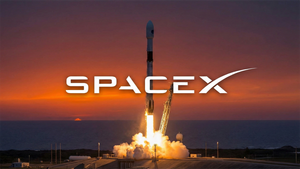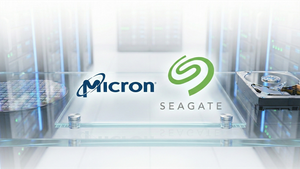
The global pharmaceutical sector stands at the precipice of a monumental transformation, driven by an unprecedented convergence of scientific breakthroughs, technological innovation, and evolving market demands. New drug developments, particularly in sophisticated biologics, groundbreaking gene therapies, and blockbuster obesity treatments, are fundamentally altering therapeutic paradigms. Simultaneously, the pervasive integration of artificial intelligence (AI) is revolutionizing every facet of drug discovery and development, promising faster, more efficient, and highly personalized medical solutions.
This dynamic landscape is further shaped by an intricate web of regulatory shifts, which are simultaneously streamlining approval pathways for innovative treatments while intensifying scrutiny on pricing, data integrity, and supply chain security. Investors and industry observers alike are keenly watching how these powerful forces will reshape market leadership, foster new strategic alliances, and ultimately redefine patient care for decades to come.
A New Era of Innovation and Market Dynamics Unfolds
The pharmaceutical industry is experiencing a profound recalibration, moving beyond traditional small-molecule drugs to embrace complex biological and genetic interventions, alongside a digital revolution fueled by AI. This pivot is driven by several key factors.
New drug developments are at the forefront of this shift. Cell and gene therapies (CGTs), for instance, continue to be a major focus, with over 1,200 active trials underway for life-threatening diseases, and the FDA projected to approve 10-20 such therapies in 2025. mRNA technology, building on its success with COVID-19 vaccines, is being explored for broader applications, attracting heavy investment. While small-molecule drugs still command a significant market share, biologics are on the rise, offering more precise treatments. Perhaps the most explosive development is in obesity treatments, where demand for GLP-1 receptor agonists has created a blockbuster market, prompting over 170 new anti-obesity drugs in various development stages and tripling venture capital funding in this segment in 2024.
Concurrently, artificial intelligence (AI) is rapidly becoming an indispensable tool. AI spending in the pharmaceutical industry is expected to reach $3 billion by 2025, with the global AI in drug discovery market projected to grow to approximately $16.5 billion by 2034. AI is accelerating drug discovery, enhancing precision, and reducing costs by analyzing vast datasets, identifying drug candidates, optimizing clinical trials, and improving supply chains. Companies are leveraging AI to reduce R&D timelines and enhance the probability of success for new therapies.
The regulatory environment is also in flux. While bodies like the FDA are implementing streamlined approvals and expedited pathways for promising therapies, there is also heightened scrutiny on data integrity, quality management, and supply chain security. Drug pricing and reimbursement constraints remain a significant concern, with governments increasingly intervening to control costs. Furthermore, regulatory frameworks are evolving to accommodate AI and digital health solutions, emphasizing safety and ethical integration. This complex regulatory dance aims to balance rapid innovation with patient safety and equitable access.
The Shifting Sands: Who Wins and Who Faces Challenges?
The confluence of these trends is creating distinct winners and losers across the pharmaceutical landscape, influencing market positions, R&D strategies, and financial performance.
Companies with strong pipelines in biologics and advanced therapies are well-positioned. Large biopharmaceutical companies like Amgen Inc. (NASDAQ: AMGN) with established expertise and continuous investment in biologics R&D, often involving complex manufacturing processes, are reinforcing their market dominance. However, the rise of biosimilars presents a challenge to original biologic manufacturers, putting pressure on companies reliant on blockbuster biologics nearing patent expiration, necessitating shifts toward next-generation therapies or portfolio diversification.
In gene therapies, specialized public biotechs are leading the charge. CRISPR Therapeutics (NASDAQ: CRSP) stands out with its approved gene-editing therapy for sickle cell disease and beta-thalassemia, leveraging its CRISPR-Cas9 platform. Intellia Therapeutics (NASDAQ: NTLA) is another frontrunner in in vivo genome editing, with advanced clinical programs, and Sarepta Therapeutics (NASDAQ: SRPT) leads in neuromuscular gene therapies. Conversely, some major pharmaceutical companies, including Pfizer (NYSE: PFE), Takeda Pharmaceuticals (TSE: 4502), and Roche (OTCQX: RHHBY), have scaled back certain adeno-associated virus (AAV) gene therapy programs due to technical hurdles and high costs, indicating a re-evaluation of strategies in this challenging segment. Smaller, early-stage gene therapy biotechs also face significant fundraising and scalability struggles.
The AI in drug discovery space is fostering new leaders and pushing traditional players to adapt. AI-driven companies like Exscientia (NASDAQ: EXAI) and Recursion Pharmaceuticals (NASDAQ: RXRX) are pioneers, utilizing their platforms to accelerate discovery. Established giants like Pfizer (NYSE: PFE) and AstraZeneca (NASDAQ: AZN) are heavily investing in and collaborating with AI firms to enhance R&D efficiency. Companies failing to adopt AI effectively risk falling behind in the speed and cost-effectiveness of bringing novel drugs to market.
The obesity treatment market is creating massive financial wins. Novo Nordisk (NYSE: NVO), with Wegovy and Ozempic, and Eli Lilly and Company (NYSE: LLY), with Zepbound and Mounjaro, are dominant players experiencing unprecedented revenue growth and market capitalization. Both are investing heavily in expanding production and developing next-generation oral formulations. Amgen Inc. (NASDAQ: AMGN) is a significant contender with its promising candidate AMG 133, and Roche (OTCQX: RHHBY) strategically entered this market by acquiring Carmot Therapeutics. Companies without a strong presence in this burgeoning market, or those solely focused on treating conditions that might be mitigated by widespread weight loss, could face long-term shifts in market demand and necessitate a re-evaluation of their R&D focus.
Industry Impact and Broader Implications
These transformative trends are not merely shifting market shares but are fundamentally reshaping the broader pharmaceutical ecosystem, impacting competitors, partners, and the very fabric of healthcare policy.
The industry is witnessing a significant shift towards prevention, personalization, and prediction, moving beyond a sole focus on treating symptoms. Personalized medicine, integrated with AI and genomics, is poised to make substantial strides, especially in oncology and rare diseases. This necessitates a more patient-centric approach across the drug lifecycle, from research to delivery. The rapid growth in biologics, gene therapies, and mRNA technology introduces greater fragmentation in technology, new supply chains, and unique product life cycles, demanding increased operational complexity and agility from companies.
Ripple effects on competitors and partners are evident in intensified competition, particularly as companies race to commercialize scientific breakthroughs. The impending "patent cliff" for drugs representing approximately $350 billion in annual worldwide revenues by 2030 will significantly impact established companies, fueling the need for innovation and pipeline replenishment. This environment is fostering new partnership models, including collaborations between large pharmaceutical companies, alliances with Contract Development & Manufacturing Organizations (CDMOs/CMOs), and strategic ties with emerging biotechs specializing in AI or gene therapy. This ecosystem approach is vital to manage the growing complexity and cost of drug development. Furthermore, the potential entry of tech giants like Google into comprehensive healthcare platforms poses a long-term disruptive threat to traditional pharmaceutical business models.
Regulatory and policy implications are profound. Stricter global guidelines, coupled with drug pricing controls like the US Inflation Reduction Act (IRA), are expected to reduce pharmaceutical revenues, particularly for high-priced medicines, potentially affecting R&D investment and market access. Conversely, streamlined pathways aim to accelerate approvals for innovative therapies. Regulators are actively grappling with how to safely and ethically integrate AI, issuing guidelines for transparency, validation, and data integrity. There's also a growing emphasis on global regulatory harmonization to simplify cross-border procedures, alongside a focus on supply chain security and resilience, driven by national security concerns and geopolitical tensions.
Historically, such periods of rapid innovation and regulatory change are not new. The current scientific revolution in biotechnology and advanced therapies mirrors the impact of the 19th-century Industrial Revolution and the scientific breakthroughs of the early 20th century (e.g., insulin, penicillin). The increased regulatory scrutiny today parallels responses to past crises, such as the 1960s Thalidomide scandal, which led to significantly enhanced FDA regulation. While the "obesity drug boom" evokes memories of the disastrous "fen-phen" frenzy of the 1990s, the current wave is underpinned by more robust scientific validation and a shift in messaging toward health improvement, suggesting a stronger foundation of rigor. This historical context suggests that incumbent pharmaceutical companies will likely adapt through a combination of competition and cooperation, absorbing new technologies through partnerships, mergers, and acquisitions rather than being entirely replaced.
The Road Ahead: Navigating Future Frontiers
The pharmaceutical sector's trajectory is set for continued dynamism, demanding strategic foresight and adaptive maneuvers from all stakeholders.
In the short-term, the industry will see accelerated drug development cycles, primarily driven by AI, with the first AI-based drugs potentially entering clinical trials soon. Personalized medicine will continue to expand, offering tailored treatments for diverse conditions. The "race to commercialize science" will intensify, placing a premium on speed and efficient execution. Long-term, AI is expected to redefine drug commercialization, driving innovation beyond 2025 and transforming the industry's culture as it fully embraces digital transformation. The focus will progressively shift from treatment to prevention, prediction, and personalized care, impacting manufacturing to become more agile and regionally focused.
Strategic pivots are essential for sustained success. Companies must move beyond pilot projects to enterprise-scale AI integration across all operations, investing in explainable AI (XAI) for transparency and compliance. A strong focus on personalized medicine and advanced therapies will require capabilities in gene editing, cell therapies, and flexible manufacturing. Strategic collaborations and partnerships will become even more critical, fostering alliances between pharma giants, AI specialists, biotechs, and CDMOs. Building resilient and sustainable supply chains through digital tools and eco-friendly practices will mitigate disruptions and meet regulatory demands. Lastly, adopting patient-centric approaches, including digital engagement and leveraging real-world evidence, will be vital for better outcomes and insights.
Emerging markets represent significant growth opportunities, with pharmaceutical revenues projected to double in the top 20 emerging markets (excluding China) within the next decade. Factors such as rising incomes, expanding healthcare access, and increasing chronic disease prevalence fuel this growth. However, challenges include underdeveloped infrastructure, cost-containment policies, intense local competition, and difficulties in scaling multinational operations. These markets can also serve as test beds for innovative business models and cost-effective clinical trials.
Potential scenarios range from "Regulated Innovation" where stringent oversight fosters collaboration and rapid access to safe therapies, to "Regulatory Gridlock" where over-caution stifles advancement. Another perspective posits a future where the sector pivots entirely to prevention and diagnostics, attracting new entrants, or a consolidation of generic manufacturers focusing on customized treatments and data leveraging. The evolution of regulatory frameworks, especially concerning AI and sustainability, will heavily influence which scenario plays out, alongside geopolitical factors that could introduce regulatory uncertainty and impact investor confidence.
Conclusion: A Sector Reimagined
The pharmaceutical sector is in the midst of an epoch-making evolution, characterized by profound scientific breakthroughs and technological disruption. The pervasive adoption of AI, the relentless pursuit of advanced therapies like gene editing, and the emergence of game-changing treatments for conditions like obesity are not merely incremental changes; they are fundamentally reshaping the industry's core.
The key takeaways are clear: AI is a game changer, accelerating every stage of drug development and enabling personalized approaches. Personalization is the future, moving towards highly targeted therapies that will redefine patient care. Regulatory evolution is critical, as governing bodies adapt to new technologies while balancing innovation with safety and access. Furthermore, emerging markets offer substantial growth, albeit with distinct challenges that demand tailored strategies. Ultimately, strategic agility and collaboration are paramount for companies to navigate this complex and rapidly evolving landscape.
The global pharmaceutical market is poised for continued expansion, driven by medical advancements, an aging population, and rising chronic disease prevalence. However, this growth will be accompanied by intense competition, persistent pressure on drug pricing, and a "race to commercialize science." The lasting impact will be a pharmaceutical sector that is faster, more efficient, highly personalized, deeply data-driven, globally integrated yet locally adaptive, and increasingly collaborative across a broader healthcare ecosystem.
Investors in the coming months should closely watch for companies demonstrating successful, enterprise-wide AI integration that translates into tangible R&D cost reductions and accelerated drug pipelines. Strategic partnerships with AI specialists, biotech firms, and CDMOs will indicate agility and innovation. Critical attention should be paid to robust market access strategies, particularly in light of regulatory changes like the US Inflation Reduction Act. Opportunities may lie in niche and high-unmet need areas like gene therapies for rare diseases, which often offer higher growth potential. Finally, regulatory agility and compliance, coupled with investments in supply chain resilience and ESG factors, will be crucial differentiators in a market undergoing unprecedented transformation. The ability to innovate, adapt, and ethically leverage technology will determine leadership in the reimagined pharmaceutical world.




